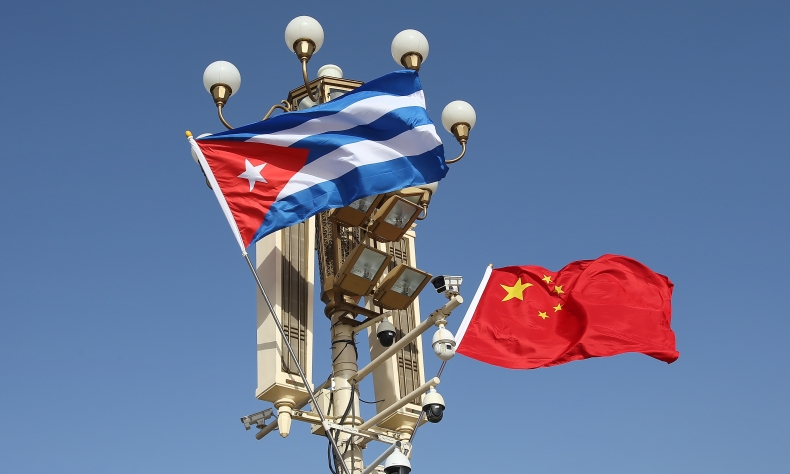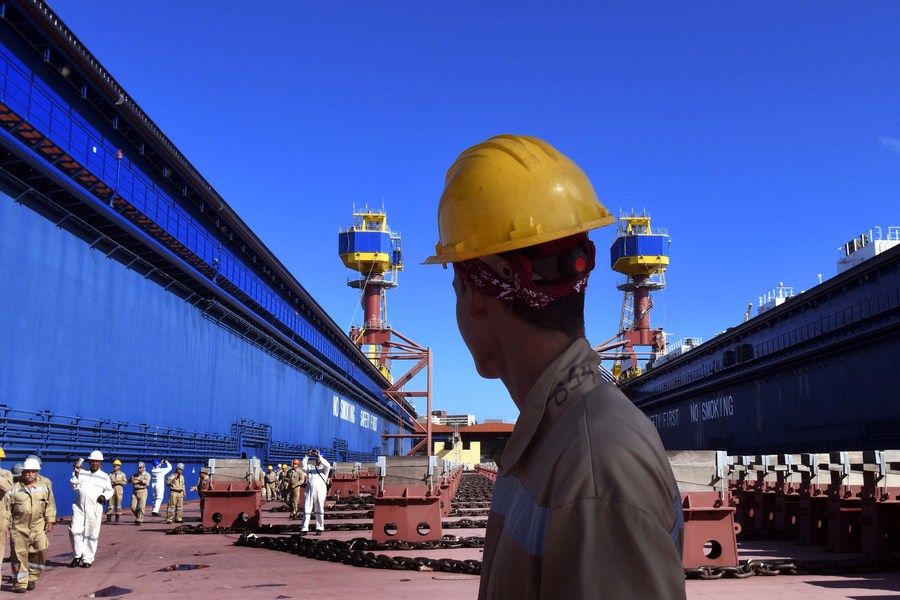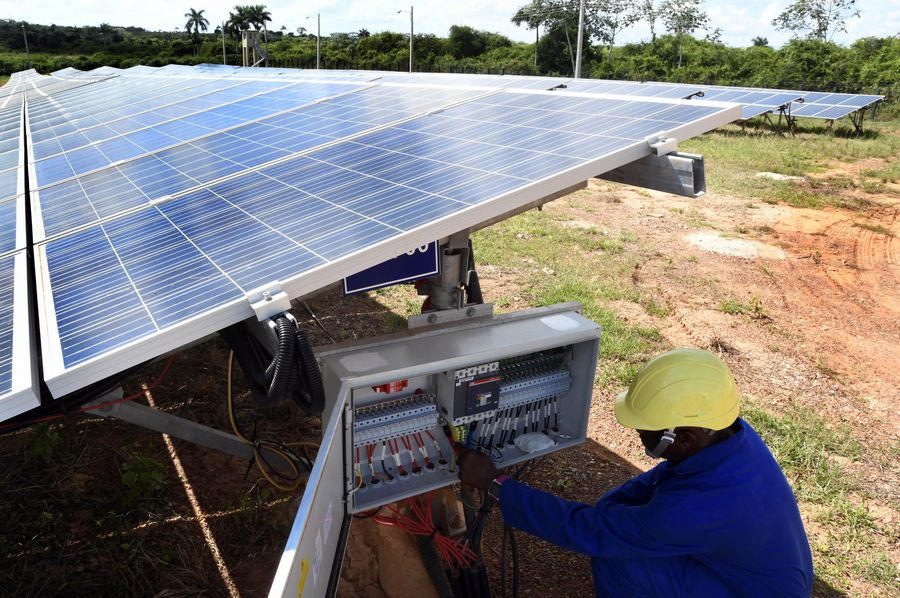When Beijing Meets Havana

Cooperation between China and the Latin America and the Caribbean (LAC) region is premised on mutual respect, guided by the principle of mutual benefit, characterized by openness and inclusiveness, and aimed at achieving common development.
The first group of Chinese indentured laborers arrived in Cuba 175 years ago and made the country their home. Ever since then, the Chinese in Cuba have contributed to its independence and development. In the center of Havana, capital of Cuba, there stands a monument erected in 1931 in tribute to Cuban-Chinese soldiers who fought in Cuba’s two wars for independence from Spain, in 1868-78 and 1895-98.
In 1960, 11 years following the founding of the People’s Republic of China (PRC) and one year after the victory of the Fidel Castro-led Cuban Revolution, China and Cuba established diplomatic ties.
“Cuba was the first country in the Western hemisphere to establish diplomatic relations with the PRC, and China-Cuba relations have become an example of solidarity and cooperation between socialist countries and sincere mutual assistance between developing countries,” Xi Jinping, General Secretary of the Communist Party of China Central Committee and Chinese President, said during his meeting with Miguel Díaz-Canel Bermudez, First Secretary of the Central Committee of the Communist Party of Cuba and Cuban President, in Beijing on November 25.
Xi told Díaz-Canel the two countries are good friends that trust each other, good comrades committed to the same cause and good brothers sharing weal and woe. The traditional friendship between the two countries has been forged and nurtured with great care by the elder generations of leaders from both sides, he added.
Strengthening cooperation
Though living far apart, the two peoples maintain close ties and have a solid foundation of friendship, Han Han, a researcher with the Institute of Latin American Studies under the Chinese Academy of Social Sciences, said.
Trade between China and Cuba has remained relatively stable amid the COVID-19 pandemic, Han told Beijing Review. “The two countries can further expand cooperation and enjoy broad prospects in green energy, digital economy and biotechnology,” she added.

China is now Cuba’s largest trading partner in goods, and Cuba is China’s second-largest trading partner in the Caribbean region. Bilateral trade increased by 7.2 percent year on year in 2021 and, in the first three quarters of this year, China’s imports from Cuba increased by 18.1 percent.
In December 2021, Cuba signed a plan with China to promote cooperation in areas such as infrastructure, technology, culture, education, tourism, energy, communications and biotechnology under the Belt and Road Initiative. The China-proposed initiative, consisting of the Silk Road Economic Belt and the 21st-Century Maritime Silk Road, aims to boost connectivity along and beyond the ancient Silk Road routes. In the same year, the country also joined the Belt and Road Energy Partnership, which aims to enhance connectivity for infrastructure and energy investment.
During their meeting, the leaders agreed to advance high-quality Belt and Road cooperation between the two countries and enhance collective endeavor in areas of mutual interest such as trade, finance and cybersecurity.
This agreement is significant for Cuba to recover and improve its production capacity and technology as well as will help resolve the fundamental problems that the country has to face in living standards and long-term development, Pan Deng, Executive Director of the Latin American and Caribbean Region Law Center at China University of Political Science and Law, explained to Global Times.
Energy prices have continued to rise with the ongoing global supply crunch, posing a great challenge to countries like Cuba that depend heavily on imports, Han said. Diversifying supply sources and building power plants and more related infrastructure are crucial for Cuba to realize its development goals. China and Cuba could strengthen cooperation in this regard, she added.
By 2030, 37 percent of Cuba’s energy supplies will come from renewable sources, according to the country’s development plan. China has invested in biomass power plants as well as solar and wind farms in Cuba. It has also provided assistance to the country in its energy transition.
For example, in the first half of this year, China offered photovoltaic power systems to 5,000 Cuban households and 25,000 LED lamps to tackle electricity shortage for families in the country’s remote rural areas under the South-South Cooperation Fund.

An exemplary role
A pearl in the northwestern Caribbean Sea, Cuba covers an area of about 110,000 square km. This country of 12 million people is unique among developing countries in the Western hemisphere.
Cubans have been living under a U.S. trade embargo and economic blockade for 60 years. The country needs to continue to find ways to grow its economy and improve the living conditions of its people, Marcus Vinicius De Freitas, a visiting professor of international law and international relations at China Foreign Affairs University, told China News Service.
“It can learn from China’s policy betterment represented by reform and opening up and socialism with Chinese characteristics,” he said.
In his meeting with Xi, Díaz-Canel said faced with the exceptionally complex and grave political and economic situation, Cuba will look to China as an example, tackle the challenges head on and with creativity and achieve the goal of building socialism.
The two countries have always been firm in supporting global efforts for peace and development, and they have taken coordinated action in multilateral and global affairs, according to Han.
Xi said cooperation between China and the Latin America and the Caribbean (LAC) region is premised on mutual respect, guided by the principle of mutual benefit, characterized by openness and inclusiveness, and aimed at achieving common development.
It is consistent with the trend of the world and of history, and serves the common interests of countries in the region, he added.
According to Vinicius, the LAC countries mainly produce goods that are complementary rather than competitive with China’s and the partnership with China receives widespread support in the region. “The synergy of this partnership has contributed to unprecedented regional growth,” he said.
Countries in the region increasingly value China’s institutional reform as well as its achievements, Han said. “The Cuban leader’s visit would also help other LAC countries better understand the complementary advantages of working with China and enhance their confidence in the unity, cooperation and common development of developing countries,” she concluded.
 Facebook
Facebook
 Twitter
Twitter
 Linkedin
Linkedin
 Google +
Google +










